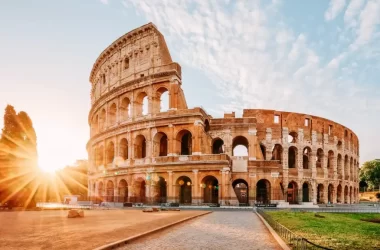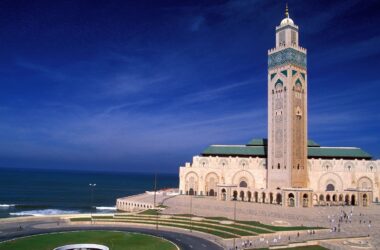Source: https://www.indonesia.travel/
Recognized by UNESCO as a world heritage site, the Borobudur temple at Magelang, Central Java, is regarded as a must-see for travelers going to the region. Situated on Menoreh Hill and surrounded by the four mountains of Sindoro, Sumbing, Merapi, and Merbabuthe temple also sit involving the Elo along with Progo rivers. Along with the temple’s royal beauty, the natural landscape provides a view like no other. After a trip to Borobudur temple, investigating the nearby area are the next option for travelers. Conventional lives with habitual rituals, arts, performances, and handicrafts remain intact in cities nearby. Numerous activities also await, like the ones given below.
- Exploring villages around Borobudur temple
With the support of horse-drawn packs or safari jeeps, tourists may gaze at villages around the Borobudur temple. Bikes are also available for visitors to rent. Some of the favorite destinations in the Region include the Junkyard Autopark, Gereja Ayam (the Chicken Church), and also Punthuk Setumbu hill. Tourists are invited to drop by at balkondes (village economy halls) in 20 different cities in the region. Balkondes also function as rest areas for tourists in which they could try out the village culinary specialties, purchase handicrafts, or stay overnight in cottages featuring architecture of yesteryear.
- Visiting art galleries
Recently, hotels around the Borobudur temple have started to offer their venues like art galleries showcasing works of musicians from several cities in Indonesia. Paintings, sculptures, and additional artwork are usually displayed in hotel lobbies, restaurants, cafes, and corridors. The region is also home to several art spaces that regularly host art exhibitions or events. You will find Galeri Unik dan Seni Borobudur Indonesia (Borobudur Particular and Art Gallery Indonesia) along with Lima Gunung Museum, belonging to veteran artist Sutanto Mendut at Mungkid, situated 4 km from Borobudur.
- Rafting along the Elo and Progo rivers
To enjoy rafting along the Elo and Progo rivers using their powerful currents and gorgeous scenery, renting a rubber boat costs Rp 1 million (US$71). The Elo River is ranked Grade II (moderate ) in difficulty degrees, which is acceptable for beginners. The rafting route starts from Pare village and ends in Ngentak. The normal length for the route is just two to three hours covering a distance of 11 km.
During the yearly Elo River Festival, rafters can enjoy many traditional art performances and decorated ships in a parade. While on the Progo River, rafting could be completed in two places: the upper and lower. The upper route is Grade III and 9 km in the distance, taking two hours to finish. The decrease path has a higher difficulty level, ranging from Grade III and Grade IV downstream of Temanggung regency. The course is approximately 26 kilometers long and takes five hours to finish. These tasks are conducted under the oversight of specialist guides.
- Sipping Menoreh coffee
Previously, Menorah Hill was known as the hideout of Prince Diponegoro’s troops during the war against the Dutch. After the war, the Dutch administration used the hill to grow coffee and, until now, java is still a commodity of the region. The coffee manufacturing center can be found at Sidoharjo and Gerbosari villages in the Kulonprogo regency, while Kerug Batur and Majaksingi will also be known as coffee manufacturers. Coffee cultivated from Menoreh Hill can be appreciated in coffee shops around the Borobudur temple. In coffee shops located on Menoreh Hill, tourists can savor cups of coffee with traditional bites amid the beautiful scenery.
- Making earthenware at Klipoh
Klipoh, situated about 5 km out of Borobudur, is a village renowned for its earthenware merchandise. However, the walls of Borobudur, one of the reliefs, depict the manufacturing of these products. For generations, people have created kitchenware, cups, plates, ashtrays, and house decorations from clay. Approaching the village, an individual can easily notice smoke coming out from furnaces while girls use clay before their homes. Back in Klipoh, tourists are welcome to make their earthenware products. A variety of production centers also offer classes for tourists to understand just how to produce them.
Before you plan a trip to Borobudur, be sure to read more about Borobudur and Indonesia by visiting Wonderful Indonesia.







